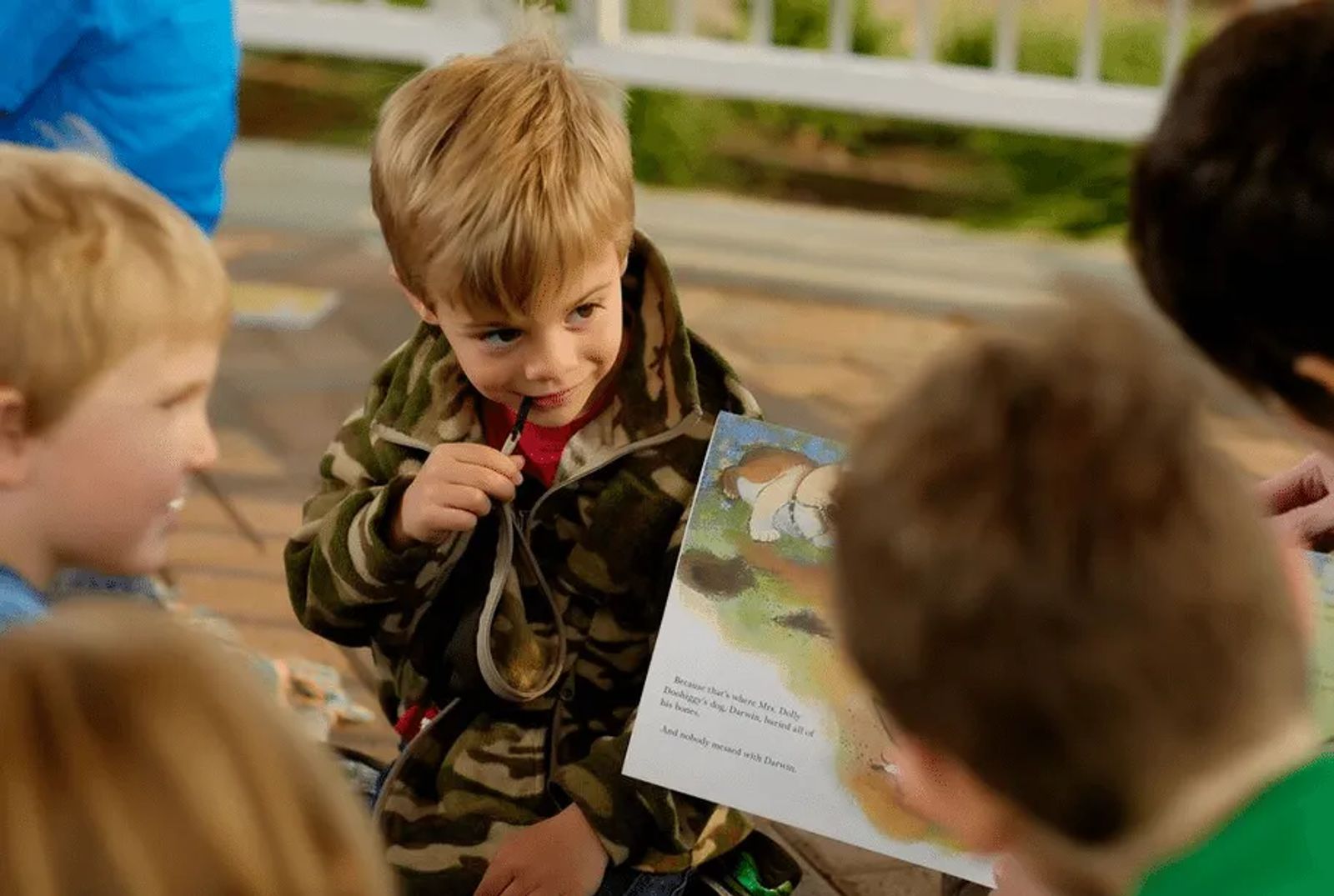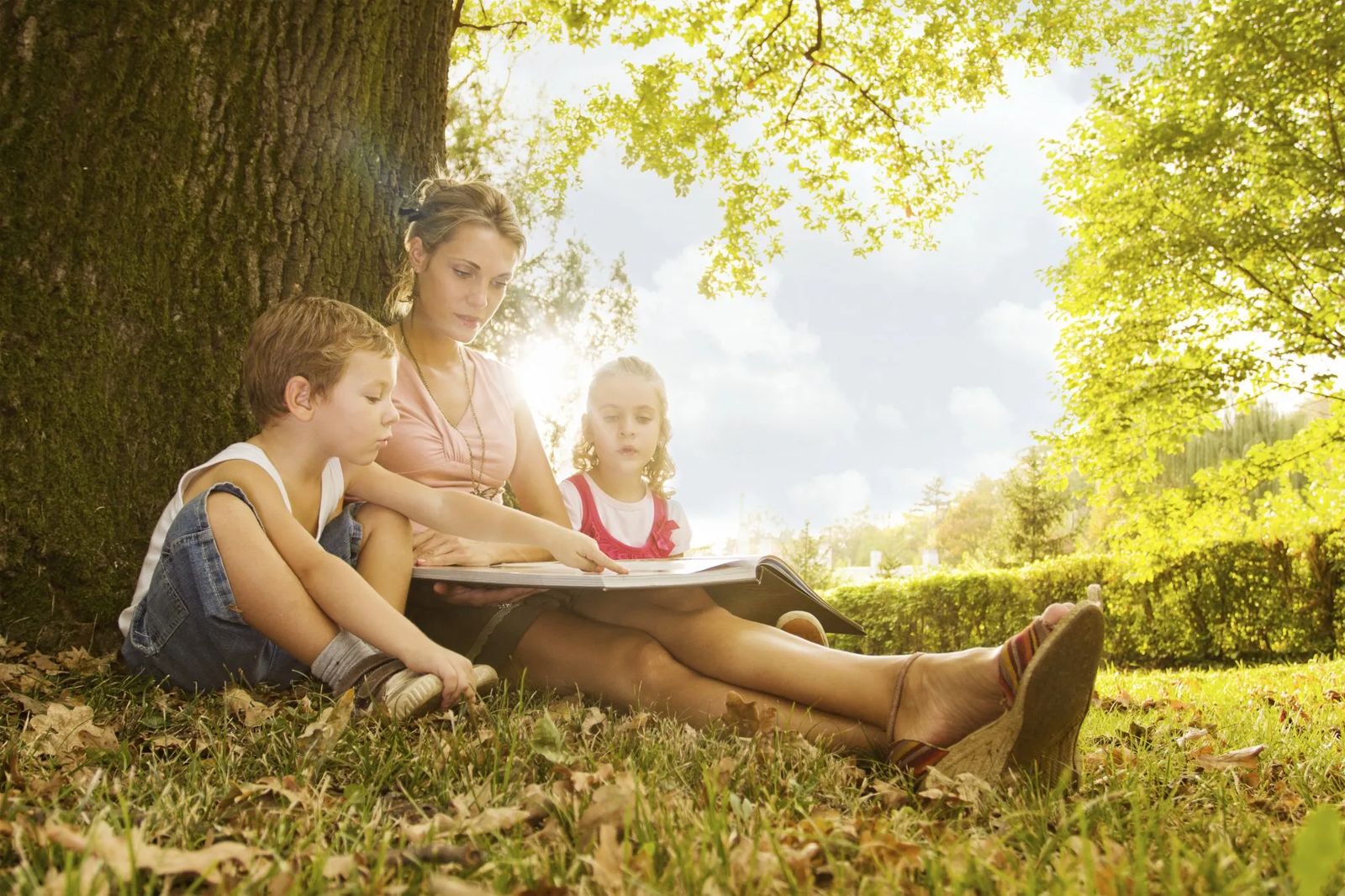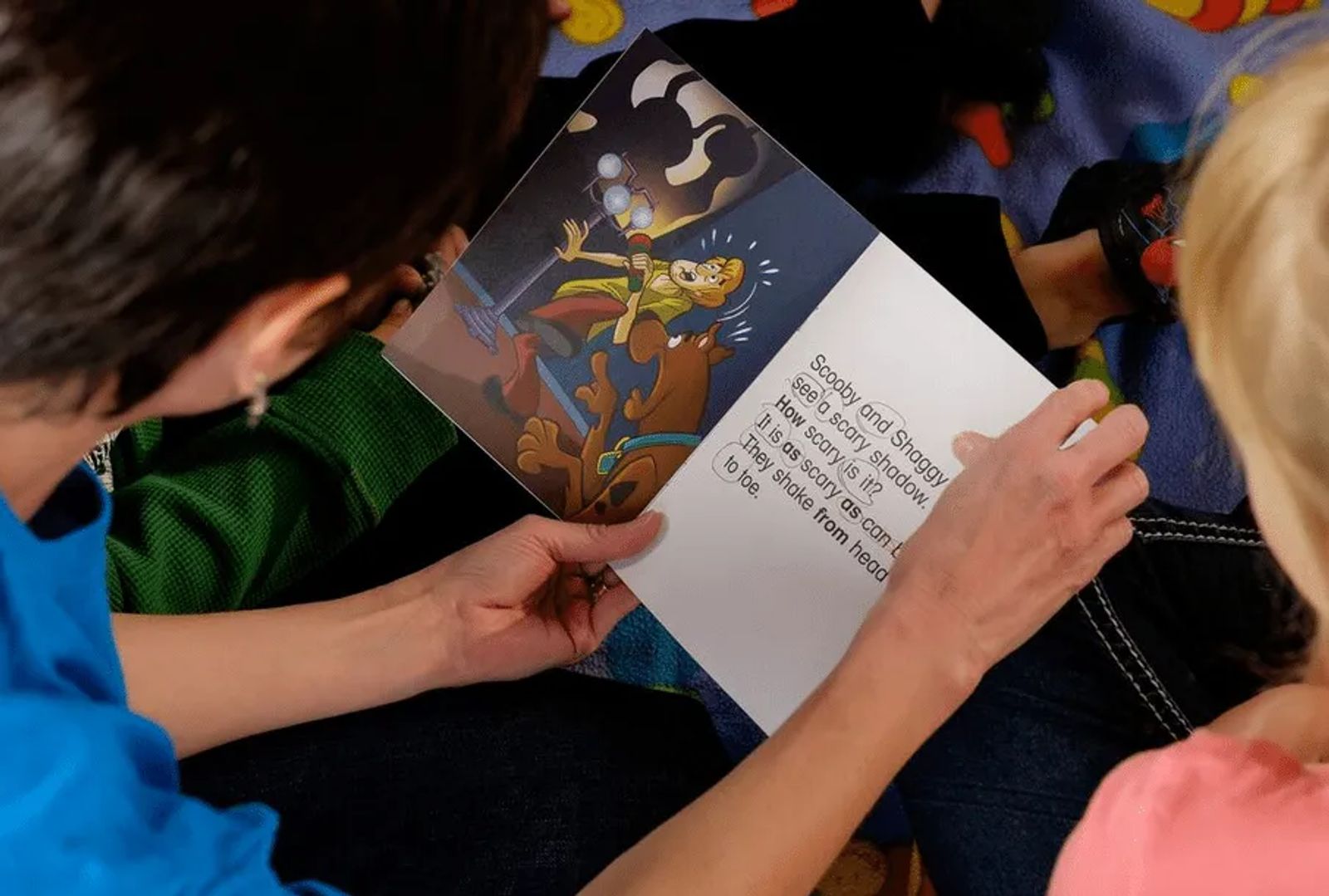
Raising A Bookworm
Battling the decline of kids reading for fun
As a small child, I can still remember the sensations while visiting one of my favorite places, the public library. I would walk in and immediately, at eye level, I would see an array of color and a vast ocean of stories just waiting for my imagination to wildly explore with each and every page. Getting a new book was a treat. Using my library card made me feel pretty important too. Seeing that library staff member use her stamp to share the due date felt like a contract to a pint-sized kid. It meant the folks at the library trusted you enough to lend it to you for a moment in time, just for you to enjoy.
If you look at recently released research from Scholastic Inc., this isn’t a visual that many kids encounter today. The statistics show that books are being pushed to the side for every kind of gadget under the sun. Instead of leisure reading time, kids are involved in multiple hobbies, sports and lessons. They often move quickly from one activity to the next. School demands have also been slowly on the rise and so, as a result, reading for pure pleasure has been on a steady decline for a number of years. This pastime isn’t falling off the map entirely, but the survey shows that each year another 3 to 5% of kids aged 5 to 17 say they don’t pick up a good book for pleasure. Today, if you ask kids if they like to read for fun, only 51% of kids will answer “yes.” Twelve percent admit, they don’t like it even a little bit.

BUILDING A LOVE OF READING
Those statistics put a lot of pressure on Children’s Librarian Cindy Patterson with the Billings Public Library. “We are up against some stiff competition,” Patterson says with a laugh. When she thinks about the decline in reading, sadly, she points to many children’s parents as major contributing factors. Cindy’s workspace sits right at the entrance of the children’s reading area. She and Librarian’s Assistant Allynne Ellis both say that if a parent isn’t dropping a child off and seeking a corner to check their phone, Cindy says, “The parent will say, ‘Go find a book, any book. It doesn’t matter what it is, just find a book.’ I feel like saying, ‘It does matter! What do you want to read? What do you like? What can we help you find?’” Allyne adds, “Kids spend all school year being forced to read what somebody tells them to read. Reading becomes this job, this chore. That just sucks all the fun out of reading.” She says, there has to be a time when a child can pick out a book for pure enjoyment. “You have got to let them branch out.”
That’s why the pair has ramped up programming to lure children into the stacks of books at the Billings Public Library. Aside from the insanely popular Summer Reading Program, they offer the Book It with a Buddy program, where a child picks an adult buddy to read the same book with. There’s story time every day and Babies and Books, where parents can bring in their newborns up to toddler age to flip through the pages of a picture book to stimulate the mind. The children’s programming page on the Billings Public Library site is packed with events for every day of the week. Each program hopes to be a building block toward developing a true love of reading.
“Babies who are read to by parents or older siblings witness better increases in vocabulary. Start them out as readers very early,” Cindy says. “When they bring you that book and you're not in the mood for it, read it anyway.” She laughs as she adds, “And if it's the same book 20 times, read it anyway!”
Both advocates argue that to grow readers, you have to be one yourself.
“It’s modeling. It’s treating yourself. It’s showing them that you read for fun too and that it’s important to you,” Allyne says. Believe it or not, dads are a powerful force when it comes to modeling a love of reading. Cindy says, “Statistics show that a dad reading has a huge impact.” She chuckles as she adds, “The dad can read a magazine upside down. It doesn’t matter. If he has something in his hands and appears to be reading, it really influences the importance of reading to kids.”

MAKING A CONNECTION IN THE CLASSROOM
If you add up the time Jeannie Reed and Radene Ostwald have spent teaching elementary-age kids, you’d have more than a combined 60 years at the head of the class. At the present time, both teach first grade at St. Francis Primary, a grade where developing a love of reading really takes root.
One of their biggest tools in keeping these lessons fun just might surprise you. “There’s something called Pinterest. You might know about it?” Jeannie says with a laugh. Radene is quick to add, “I think I have 64 boards! I have information on authors, I have activities that go along with different little stories.” The pair will even cue up a Youtube video on occasion to give students insights from authors in their own words. “There are a lot of videos showing authors reading from their books and chatting about writing,” says Jeannie. “It’s the next best thing to having the author come for a visit. That has been wonderful. The kids really enjoy getting to know an author’s craft.”
Jeanie loves connecting kids to authors pointing out that we as adults have our favorite writers, why shouldn’t kids? “I remember the day I just knew this was something important to do. When I taught in South Dakota, I was able to go to a lot of reading conferences. I have met probably 15 different prolific children’s authors and the kids love to hear about that.” After one conference, Jeannie shared a signed copy of a Jack Prelutsky book by passing it around the class room. She says, “One of the boys took his hand and just rubbed over that signature. It still gives me chills. He knew that the author had touched that book.”
To keep that love of books alive, Jeannie says, “I will give the students books for their birthday and they get to choose one from the book order. They just scour that book order looking for just the right book.” Radene adds, “We also build more time into our day for the enjoyment of reading because we know how wonderful it is to read a story. It’s so worth it.”
Both teachers say sharing this love of reading at home is key to keeping that passion in young readers alive. Jeannie says, “Share your love of a series with your kids. Have a book shelf in your home and set the example.” Radene says that her family makes reading a priority each night, “At my house, we have a reading party every night where everybody has their books out.” And both say that parents shouldn’t stop reading aloud to kids. Instead, keep doing it for as long as your child will let you. Both say it’s just one more connection you can build and spend some precious time with your child in the process.

THE DIGITAL SHIFT
While some may point fingers at technology and say iPods, tablets and smart phones are to blame for kids not picking up a good book, one technology guru feels we need to take a closer look. While you might feel the printed word sits in the shadows of a multitude of gadgets, Technology Integration Specialist Ann Brucker with School District 2 sees it differently. She sees these tools leading instead to an explosion of learning.
“Holy cow, there are some incredible things happening out there these days!” Ann says exuberantly. “We have kindergarteners blogging in response to reading, first graders creating video book reviews, second graders creating iBooks, third graders telling digital stories, fourth graders making recordings to compare their own fluency levels, fifth graders writing collaborative short stories, sixth graders blogging with students in other states. The list goes on and on and up and up!”
And when it comes to fluency, many devices have the tools to help an early reader grow faster than ever before. Ann explains by saying, “Through the use of text-to-speech features, even the most struggling readers can now have access to text. This helps to build confidence and fluency, which ultimately creates better readers.”
Because it’s a whole new world of learning, Billings’ public schools allow all students to have digital access to our public library. Not only can they use the Overdrive app, which allows students to borrow eBooks and audiobooks, through Montana Library 2 Go, students can borrow eBooks from the Billings Public Library straight to their devices with just a few clicks. Ann argues it’s more, not less access for kids to open up a whole new world with books.
“I can understand parents’ hesitation with allowing or encouraging digital devices for reading because it moves kids away from the purity of books we knew as children,” Ann says. “However, it’s also important to point out that the world has changed since then. With those changes, our kids need and want new skills.”
Ann still repeats a catch phrase that she used frequently when she taught at Ponderosa School. “The more you read the smarter you get. The smarter you get, the more you read!” While the statistics point to fewer and fewer kids reading for fun, she says each time she makes the trip out to a different public school in Billings to integrate technology into lesson plans, she still sees plenty of kids with “their noses buried in books.” She says, “Kids still know that books have the power to take them off to new adventures in far-flung places. So, don’t lose hope.” She says what’s happening today is the product of children having not just one, but many pastimes to keep them entertained. “Kids might dance or sing and they might dabble in Minecraft too, but there are definitely still readers out there!”

THE RESEARCH AT A GLANCE
The fall of reading for fun
51% of children love or like reading for fun, a 7% decline since 2012
12% of kids say they don’t like to read at all
62% of children between the ages of 6 and 8 love reading for fun versus only 46% of children age 15 to 17
A 6- to 11-year-old child is more likely to be a frequent reader if they were read to aloud at home
Only 54% of children up to the age of 5 are read to aloud at home
Source: Kids & Family Reading Survey from Scholastic Inc.
READING ON THE GO
Click on over and keep your early readers happy
Sitting and waiting in the doctor’s office and have an antsy child who needs a little distraction? Why not log on to find an e-book to keep him entertained? The Billings Public Library subscribes to a service called Abdo EBooks, which offers hundreds of books that are available with just a few clicks. To access an e-book, visit ci.billings.mt.us and then click on Children. From there, click on Children’s Resources and click on the Children’s e-book link. The username and password are both the first seven digits of your library card number. No need to download these books, they are right there on the library’s database ready and waiting for you to read with your child.
Want to help your child start their digital journey into a book?
These reading apps top the list
Reading Rainbow: Based on the TV show on PBS, this app features an unlimited library of books and video field trips for your children.
Puppet Pals: Your imagination is the limit with this movie making app. The illustrations created with the app automatically move in sync to your voice! Play it back and share your movies. It’s perfect for book reports, language and story development, storyboarding, and more. Available only in the iTunes store.
Super Why: Help your child achieve the power to read with this collection of interactive literacy games. Play along with the main characters from the TV series while practicing the alphabet, rhyming, spelling, writing and reading. Available in both the iTunes and Play Store as well as in the Nook and Windows app stores.
Storia: Let this app capture your child’s imagination by helping to support and grow a love for reading at home and in the classroom. This app gives access to thousands of book titles for kids of all ages and reading levels. From favorite picture eBooks to the hottest new series, Storia has the stories kids want in a digital book format they love. Available only for Android devices.
MeeGenius: Turn your child’s mobile device into an expansive library of digital books for kids up to 8 years old. MeeGenius books are available with read along word highlighting, rich illustrations and engaging story narration.













